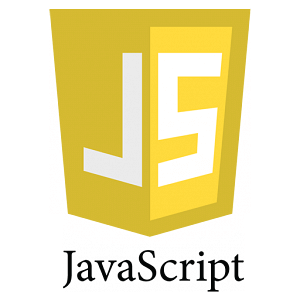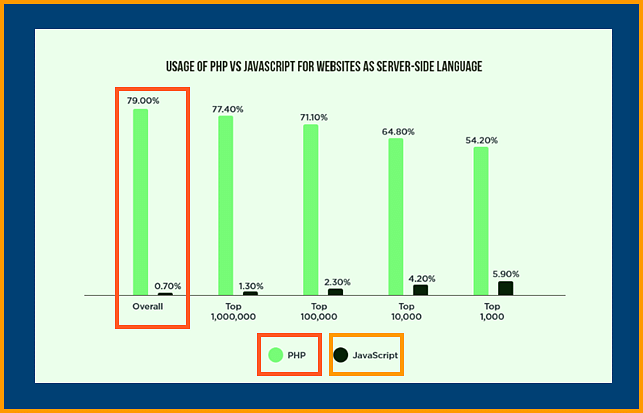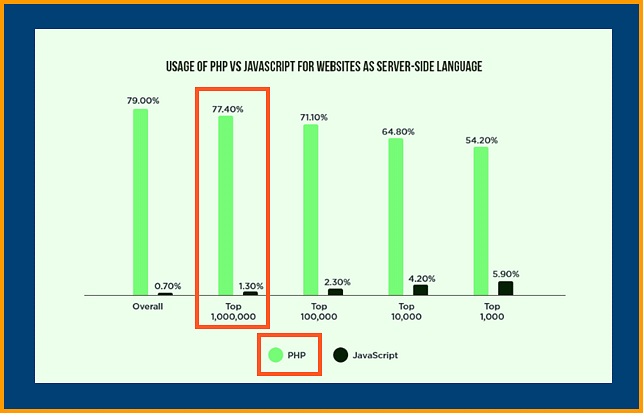If you want to write codes for the web, you will need to choose a suitable programming language on either the client-side or the server-side. But which one is the right pick? Both PHP and Javascript are well-known for creating websites. A deep insightful comparison between the two makes your decision simpler. So, without further ado, you will explore PHP vs. JavaScript in detail.
What is PHP?

- PHP is an object-oriented back-end scripting language that was launched in the year 1995. Its primary purpose was to create dynamic websites, but it is also used as a general-purpose language.
- PHP has many unique features, such as it is simple and easy to use. It is used for quickly scaling websites, as its performance and security are high.
What is JavaScript?

- Javascript is also an object-oriented scripting language, but you mainly used it for front-end development purposes.
- The programming language was released in 1995. One of the major benefits of JavaScript is that the source code is human readable.
- However, it is also highly regarded for creating user-friendly websites.
Note: Since it supports client-side applications, it burdens less load on the server.
PHP and JavaScript: Basic Differences
Features |
PHP |
JavaScript |
|
Purpose |
Back-end Language |
Front-end Language |
|
Performance |
Synchronous |
Asynchronous |
|
Platform Independent |
Yes |
Yes |
|
Extensibility |
Used along with HTML |
Used along with HTML, XML, and Ajax |
|
Security |
Highly Secured |
Comparatively low |
|
Web pages |
Used for dynamic web pages |
Used for web-friendly web pages |
|
Implementation |
Implemented with MariaDB, MySQL, and PostgreSQL |
Implemented with MongoDB, Couch DB, and NoSQL |
|
Flexible |
Yes |
Yes |
|
GitHub Rank |
8th |
1st |
|
Customizable |
Yes |
Yes |
|
Object-oriented |
Yes |
Yes |
|
Case sensitive to variables |
Yes |
Yes |
|
Case sensitive in function |
No |
Yes |
|
Objects & Arrays interchangeable |
No |
Yes |
|
Supports framework |
Yes |
Yes |
|
Supports features |
Low |
More |
|
Garbage collection |
Yes |
Yes |
|
Requests http to execute |
Yes |
Yes |
The differences mentioned above are minor. Moving forward, you will have a look at the key differences between PHP vs. JavaScript.
PHP vs. JavaScript: Key Differences
Recently, a report from W3tech.com was released, that claims that the percentage of websites built using PHP language is more when compared to JavaScript.
In this section of the "PHP vs. JavaScript" tutorial, you will explore a few key differences, they are:
- Performance
- Availability
- Concurrency
- Runtime Environments
- Simplicity
- Comments
- Variable
Performance
As you can see, this graph depicts that close to 79% of websites use PHP as the server-side programming language. On the other hand, just 0.7% of websites use JavaScript as the server-side language.

Likewise, in the below image, you will notice that 77.4% of all websites ranked in the top 1,000,000 use PHP scripting language.

Availability
- Availability plays a vital role in PHP and JavaScript.
- As discussed earlier, PHP is an Open Source language, and the source code of PHP is available at zero price to the public.
- But, JavaScript is a non-free program, and it is an open standard program maintained by the W3C and Ecma International.
Concurrency
- Concurrency implies an incomplete task until all the threads are complete.
- PHP supports multithreaded blocking I/O operations to achieve multiple tasks simultaneously with a systematic approach. In contrast, JavaScript is a single-threaded functional script that completes an event-driven model with a smooth input/output execution flow.
Note: However, JS makes the code execute concurrently.
- The fourth difference is PHP Vs. JavaScript Integration with external code.
- An individual can integrate a PHP code with HTML Code alone. At the same time, JS code can be combined with the latest technologies like HTML, XML, and Ajax.
Runtime Environments
- You can easily integrate both with HTML code, each requiring different interpreters to run their code.
- The installation approach of PHP is easy and uses Zend Engine as a compiler.
- The reliability, extensibility, and performance of the Zend Engine play a significant role in the increasing popularity of PHP.
- JavaScript uses node js, as it can perform tasks that other server-side programming languages perform.
Simplicity
- The significant difference between PHP and JavaScript is how simple they are to learn and use.
- As PHP has more libraries, it is simpler to use.
- PHP provides functions for every operation you can come up with. Many popular websites, including UBER, use PHP because of its simple concept.
Comments
- Comments are the explanation included by developers while coding.

- In the image above, both PHP and JavaScript have comments by listing which language supports which kind of comments.
Variables
- A PHP variable declares all the variables as local unless it is defined as Global.
- If you want to declare a local variable in JavaScript, always ensure using the keyword "var," or else it will consider that variable as Global by default.
Similarities Between PHP and JavaScript
Now, have a look at the similarities between the two:
- Both the languages are object-oriented, they are easy to use and understand. They are both case sensitive to variables, and both the languages call Hypertext transfer protocol to execute a program.
- Note: However, when a user sends a request to the server, it provides information by sending a PHP HTTP response.
- Frameworks and garbage collection; are features that both languages have. They are also platform-independent.
- PHP and JS change the normal flow of the code execution when an exceptional change occurs
Which Programming Language to Choose?
Now, if you are confused about which one to choose for your work, consider the following points:
Select PHP (as your back-end language) if your project covers:
- Solution stacks such as LAMP (Apache and MySQL)
- Then, it should have CMS, i.e., content management services like Drupal, WordPress, Joomla, etc.
- After that, you can use PHP for even Servers like PostgreSQL, MariaDB, Oracle, Sybase, etc.
That was about PHP. Now, let's discuss JavaScript.
It makes sense to choose JavaScript if your project covers:
- Front-end technologies like Angular js, React js, Backbone.js, Ember.js, etc.
- Applications like SPAs (SPA stands for Dynamic Single Page Applications)
- It also covers Server Technologies like MongoDB, Express.js, Node.js, etc., and Solutions Stacks like MEAN (Express js, Angular js, MongoDB, etc.)
Advance your career as a MEAN stack developer with the Full Stack Web Developer - MEAN Stack Master's Program. Enroll now!
Final Thoughts
With that, you have come to the end of the PHP vs. Javascript tutorial. Are you planning to do a PHP course? In that case, Simplilearn has come up with a PHP course that could help you grow your programming skills. The Full Stack Development Post Graduate of Simplilearn includes all the basic and advanced concepts, thus helping you easily learn PHP.
Got questions for us? Drop them in the comments section of this tutorial; our experts will get back to you at the earliest. To learn more, watch the following video: https://www.youtube.com/watch?v=u8A6y5sjq74&t=307s

